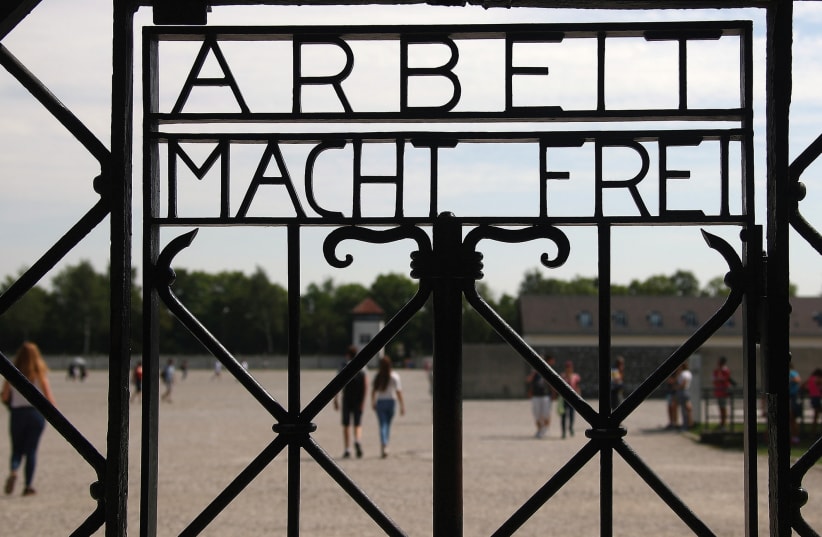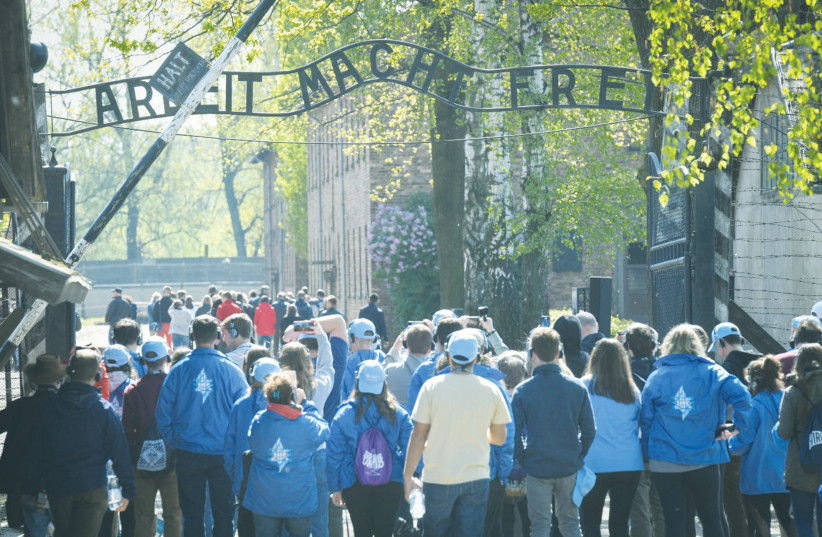In the early 80s, I was recruited by a human rights organization to introduce the Holocaust to high school and college curricula throughout the US. The funders liked that I had studied the Holocaust and had lived and worked in Israel, that I’d spent part of my childhood in Germany, including a visit to Dachau that made a lasting impression. But they loved that I wasn’t Jewish (Thomas Patrick Hogan – you do the math).
It’s hard to appreciate how little Americans knew about the Holocaust back then, most of their knowledge stemming from Holocaust, a Roots-like miniseries that starred a young Meryl Streep. My initial outreach to high schools and colleges was met with a standard response: “We don’t have a Jewish Studies program.” I explained that the subject wasn’t religious or cultural in nature, that its appropriate home was the History department. But no takers.
What cracked the code and launched the program were two related events. The first was creating a two-week unit that focused not only on Hitler’s rise to power – and the world’s subsequent ambivalence – but that also drew parallels between Hitler’s six-point formula for genocide and its American counterparts, slavery and our campaign of extinction against Native Americans. This contemporary focus generated heated responses by parents and American history teachers, but it shined a light on the program and the lessons it was trying to deliver.
But it was the second component, the testimony of Holocaust survivors, that really put us on the map. Most had harrowing stories that they’d never shared with even their families, so they were understandably hesitant to tell them in public. But one brave individual, Anne Tieger, a survivor of six camps, agreed to speak.
She had no prepared remarks, but she answered every question put to her in a soft voice for an hour minimum, usually longer. Schools alerted local newspapers and TV stations, and the resulting coverage encouraged other survivors to share their experiences. Within a year, our schedule was booked 12 months out, including my teaching a semester-long course on the Holocaust at two local universities.
AFTER RUNNING the program for a number of years, I handed it off to my successor and went into the world of business. Silicon Valley was in its adolescence and I found myself as the initial member of the marketing department at a hot young company called Oracle. During my seven years there I wrote the company’s annual reports and brochures, started Oracle Magazine and ran all the advertising, trade shows and outreach programs.
Leveraging that experience, I started a small marketing agency that worked with the VC (Venture Capital) community to position and launch the start-ups that are the bread and butter of the Valley. Over a 10-year period, we launched 51 startups, 17 of which either went public or were acquired. With that track record (the normal VC hit rate is less than 10%), we were red-hot.
But as I worked with our start-ups, I also watched the rise of autocratic regimes and hate crimes throughout the world. And it worried me that the world was observing rather than addressing these events. The events of today gave me a gnawing sense of déjà vu: I’d seen similar events and attitudes in 1930s Germany.
Our new president openly admired autocratic rulers and encouraged racism and conflict. His followers showed the same bigotry and penchant for violence as the Brown Shirts of the early Nazi regime. A vigorous attack on the truth and a free press was under way, with Steven Miller standing in for Joseph Goebbels. Then January 6 brought our version of the burning of the Reichstag and a yearning for martial law. And our response? The same disbelief and sense of helplessness that had paralyzed Germany as Hitler secured his power and initiated his campaign against the Jews. And it scared the hell out of me.
So I sold the agency, left the VC world and returned to academia, to the University of California at Santa Cruz, where I taught two courses, the first on the lessons of the Holocaust, the second on 20th-century genocides.
In the face of my decision to switch careers, I was asked if I was worried that the Holocaust might be forgotten. No, the Holocaust was now entrenched in high school and university curricula. But the contemporary lessons of the Holocaust were being ignored.
Some of my fellow professors wondered if I was exaggerating the parallels between the US today and Germany in the ‘30s. My response was that they were thinking of the Germany of 1938-1939, with Nazism at its peak. My students, on the other hand, were mapping current events to the Germany of 1933-1938, when German inaction and the world’s ambivalence combined to enable a world war and a campaign of unparalleled mass murder.
The bottom line that I wanted to impart to my students was that genocide is a cancer: It has stages. To combat it, you need to attack early and aggressively. Waiting and hoping isn’t an option. Because by the time the camps are built, the trains are running, and the crematoria are working overtime, we’re in Stage 4, with no foreseeable positive outcome.
SO HOW did we set about contemporizing the Holocaust? To begin, we debunked the popular phrase, “Never again.” Ever since the term was defined and embraced in 1944, “genocide” has been perpetrated historically (Cambodia, Rwanda) as well as currently (Sudan, Myanmar, China). And the world either ignores them entirely as politically convenient or cites reasons why it can’t intervene.
Which brings us to the second lesson: reconsidering intervention. History has proven that there are only three ways to end a genocide: 1) we run out of human fuel; 2) armed intervention; and 3) a concerted effort by the world community. Given how rare #3 is, we need to reconsider how and when we insert ourselves into world events. But “intervention” these days has become a pejorative: Stroll any college campus these days and you’ll see one table after another demanding “US Out of _______” but you’ll search in vain for a table that demands “US Into Darfur.”
My students also bring the Holocaust back home by tackling such pressing issues as: How can a legitimate government counter-insurgent movements (Proud Boys, Oath Keepers) and stay within the norms of our democracy? Or when does free speech become hate speech? How can a divided America find the commonality to intervene in early-stage genocides? And finally, what role should the UN play in all of this?
Here’s the bottom line: History is clean, current events are dirty. Just as we can scold ourselves for not getting involved earlier in Rwanda or Bosnia, we’ll be doing the same years from now about the genocides happening on our watch. It’s time to roll up our sleeves and get a little dirty. Because this time the threat is not just “over there” – it’s right here.
The writer is a professor of Holocaust Studies. His novel about Auschwitz, The Devil’s Breath, has just been published.

